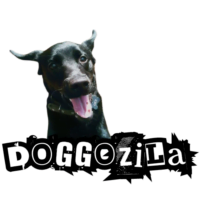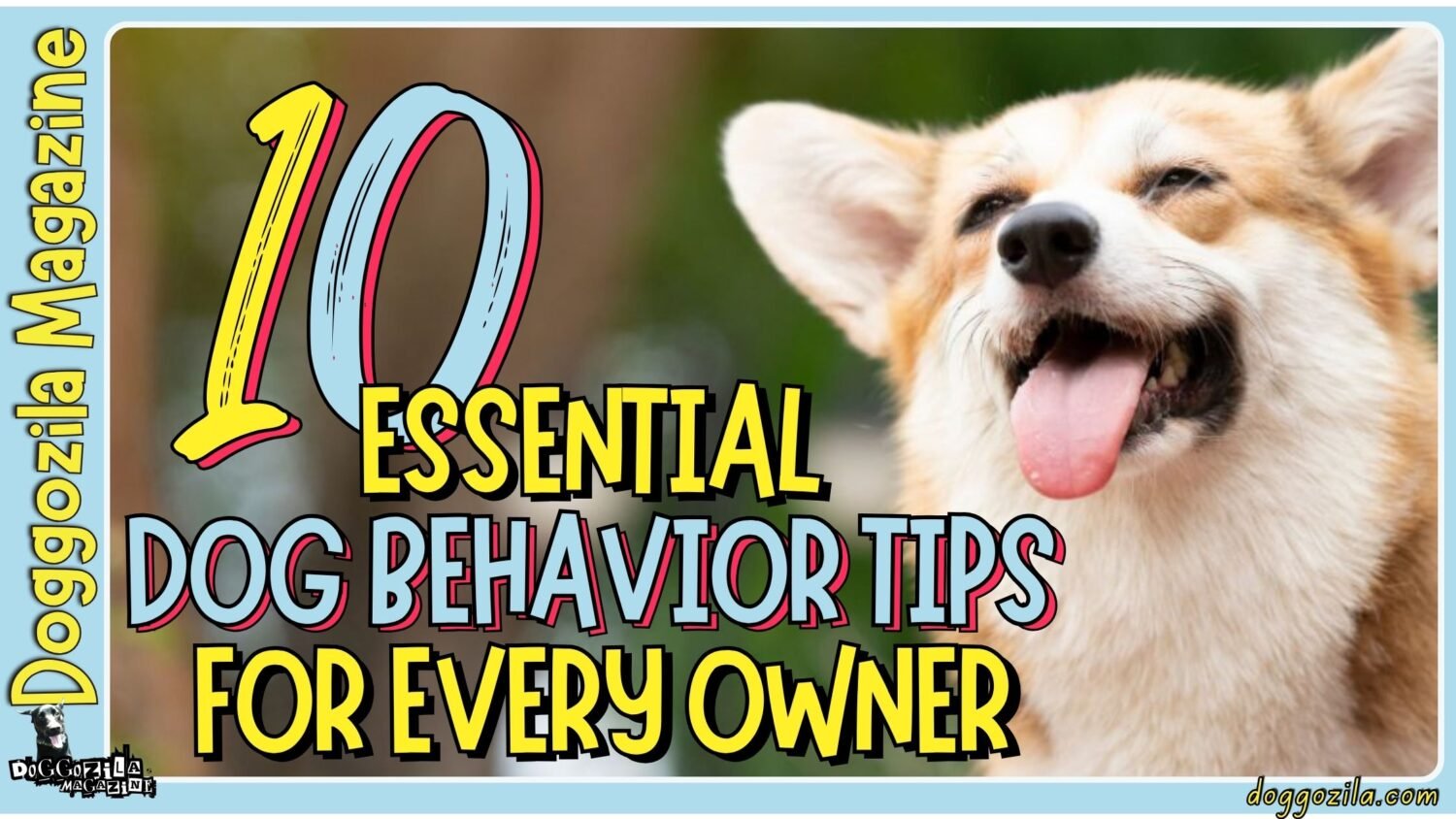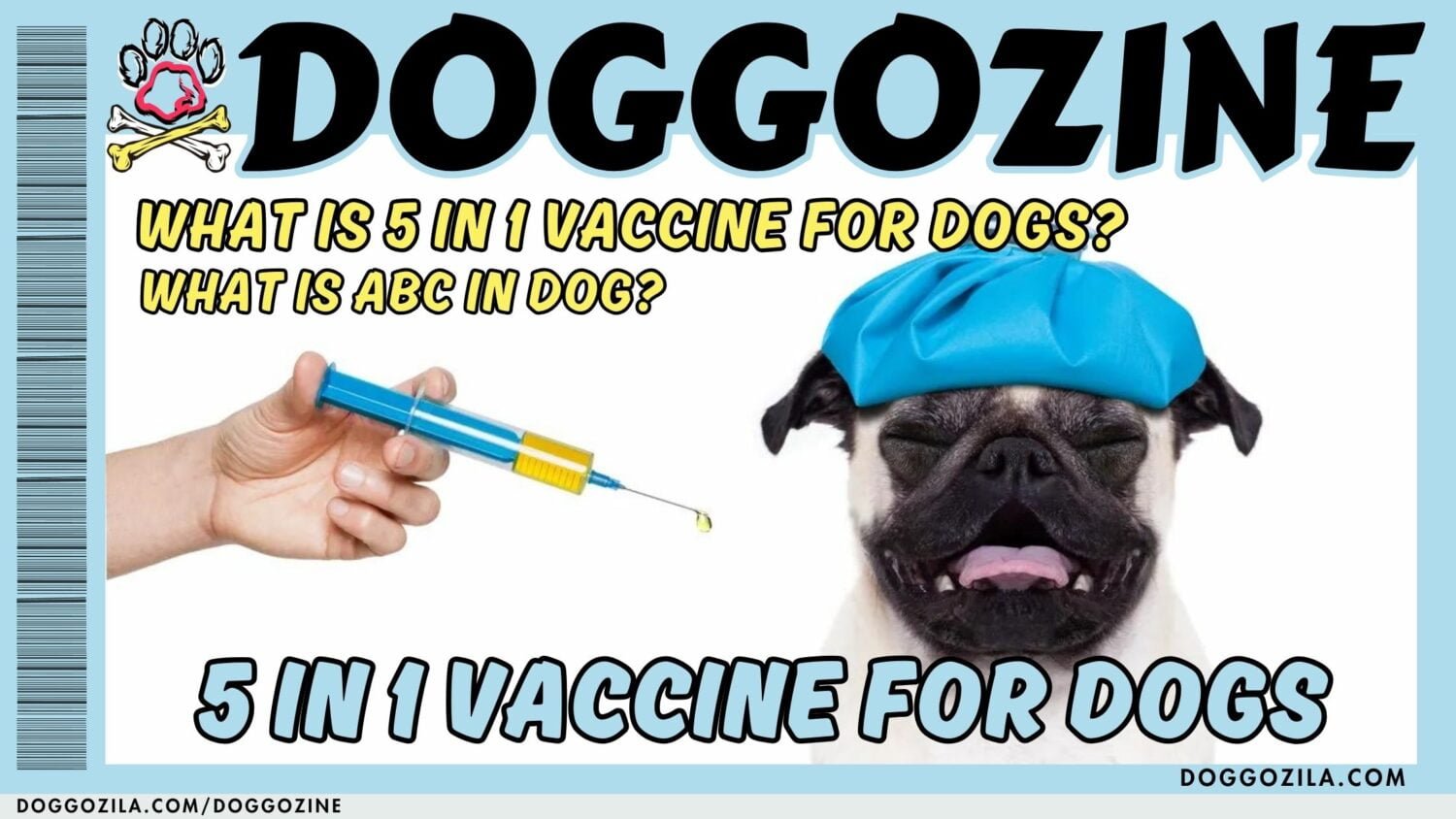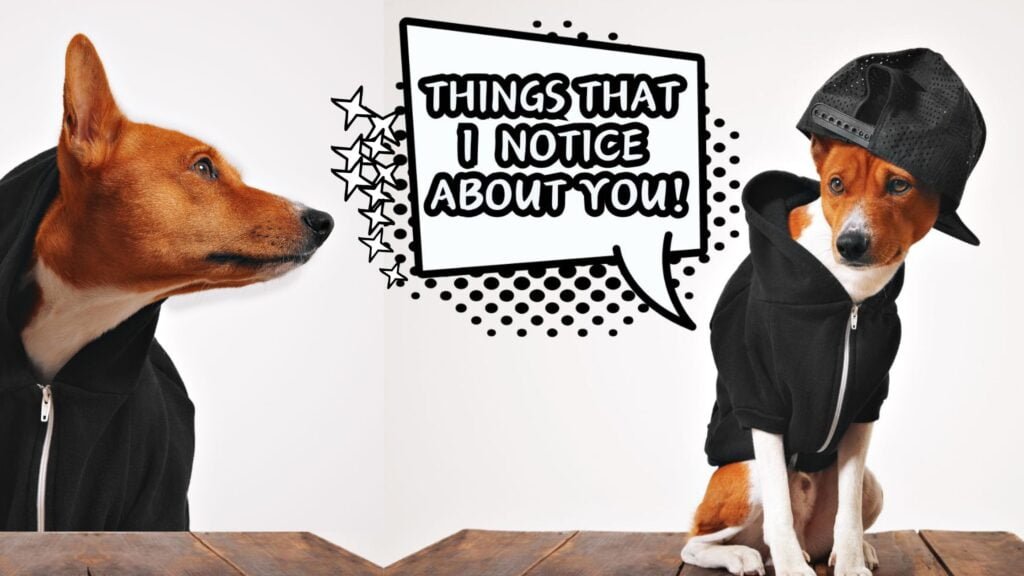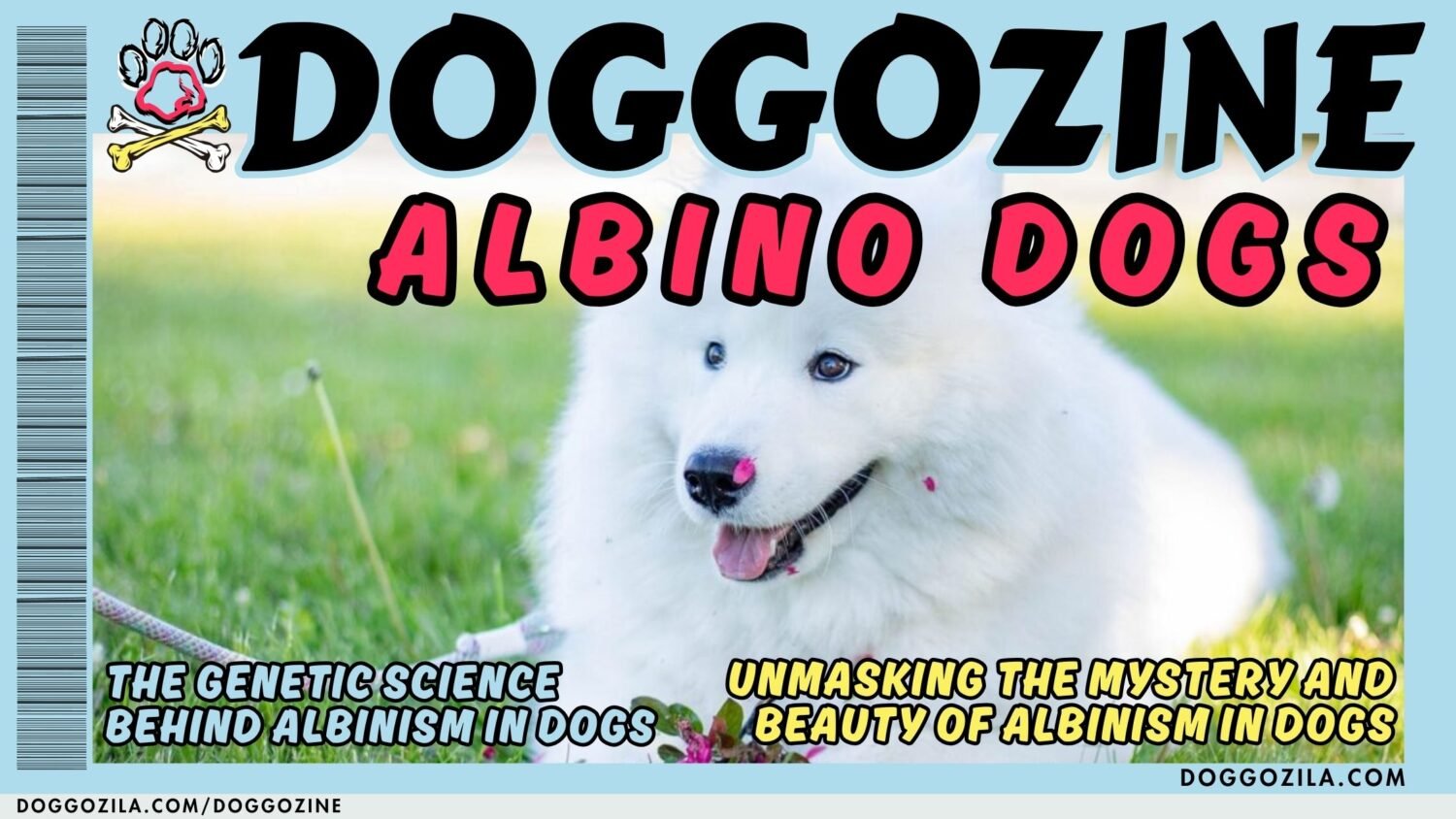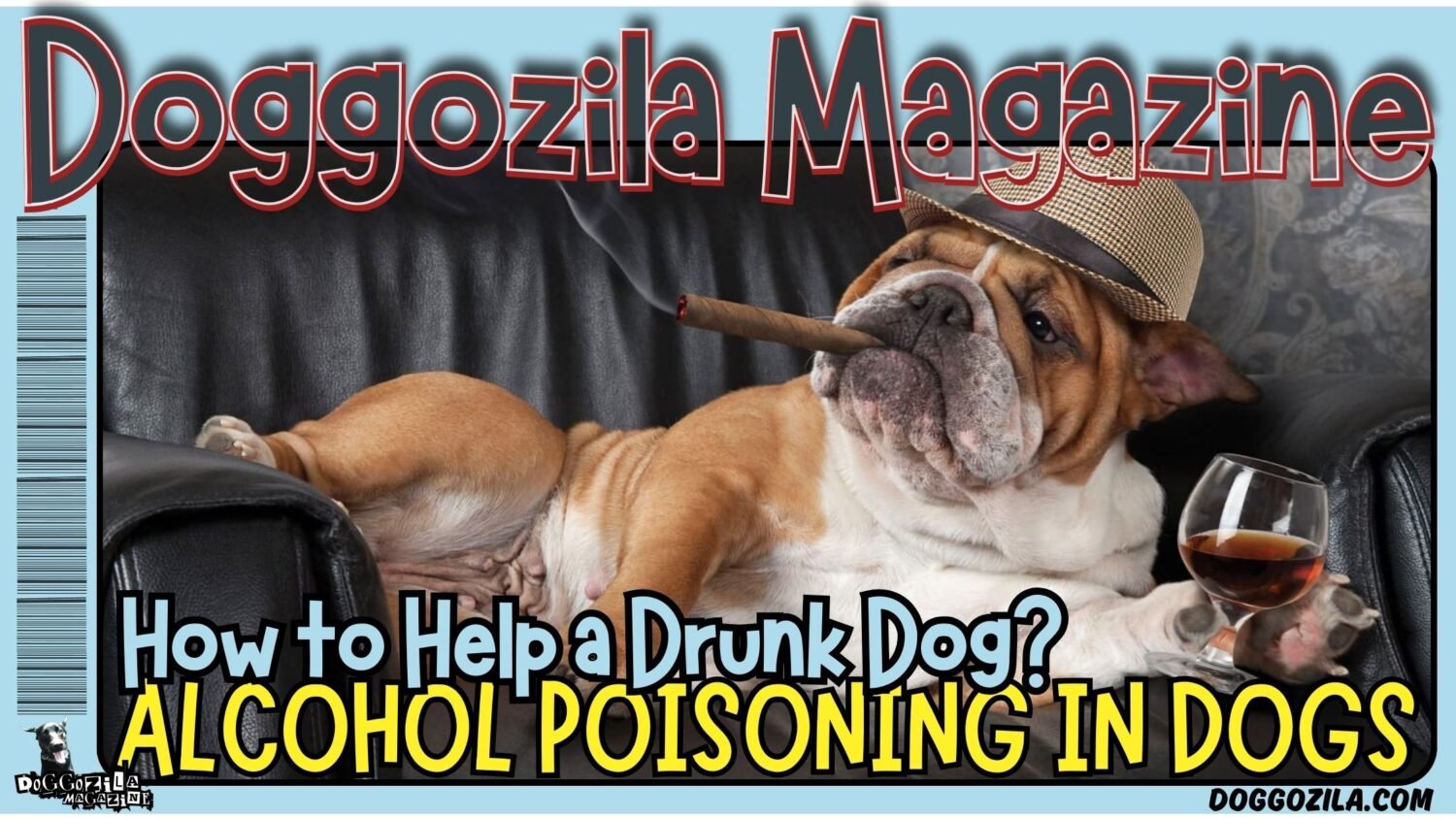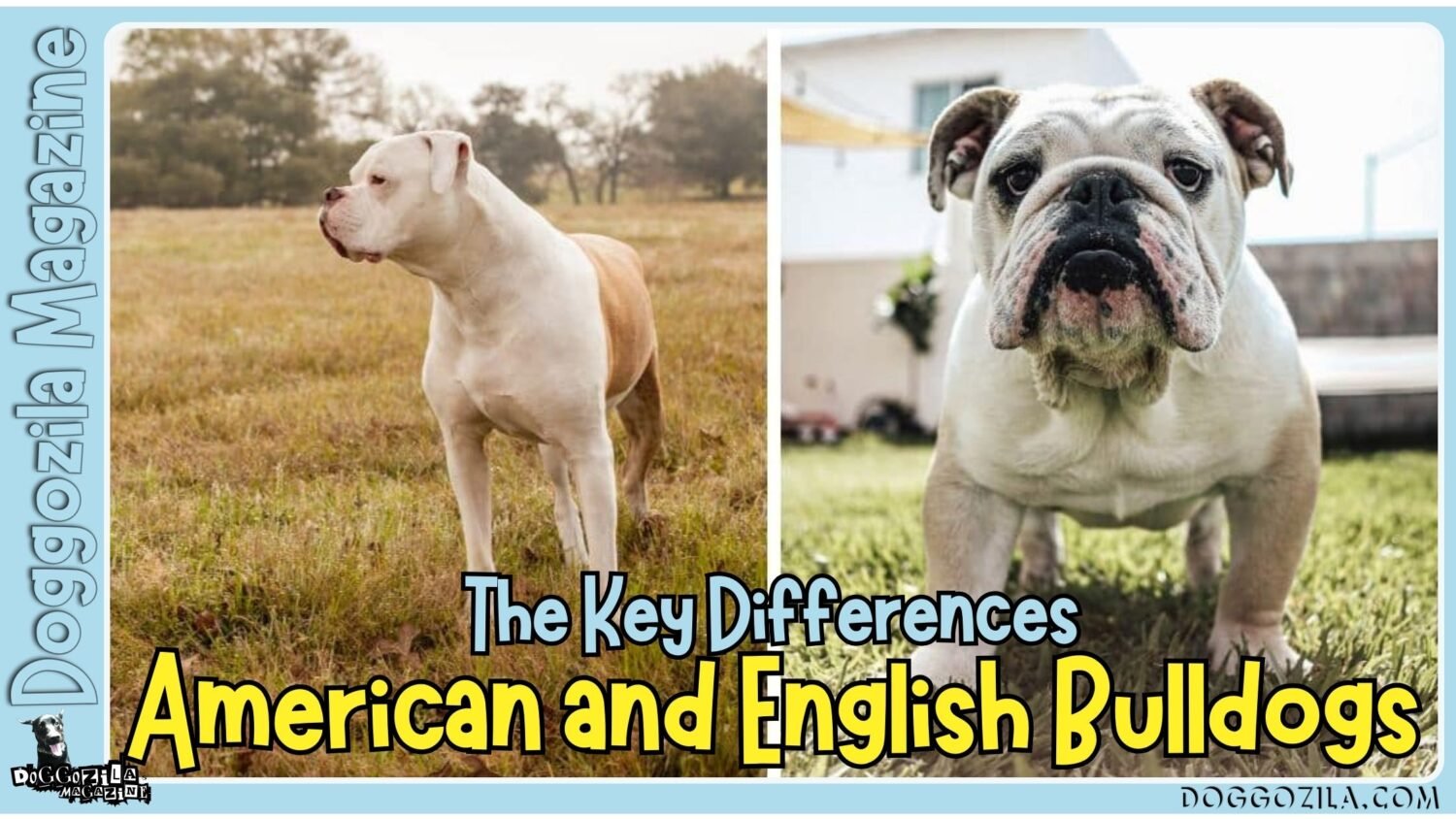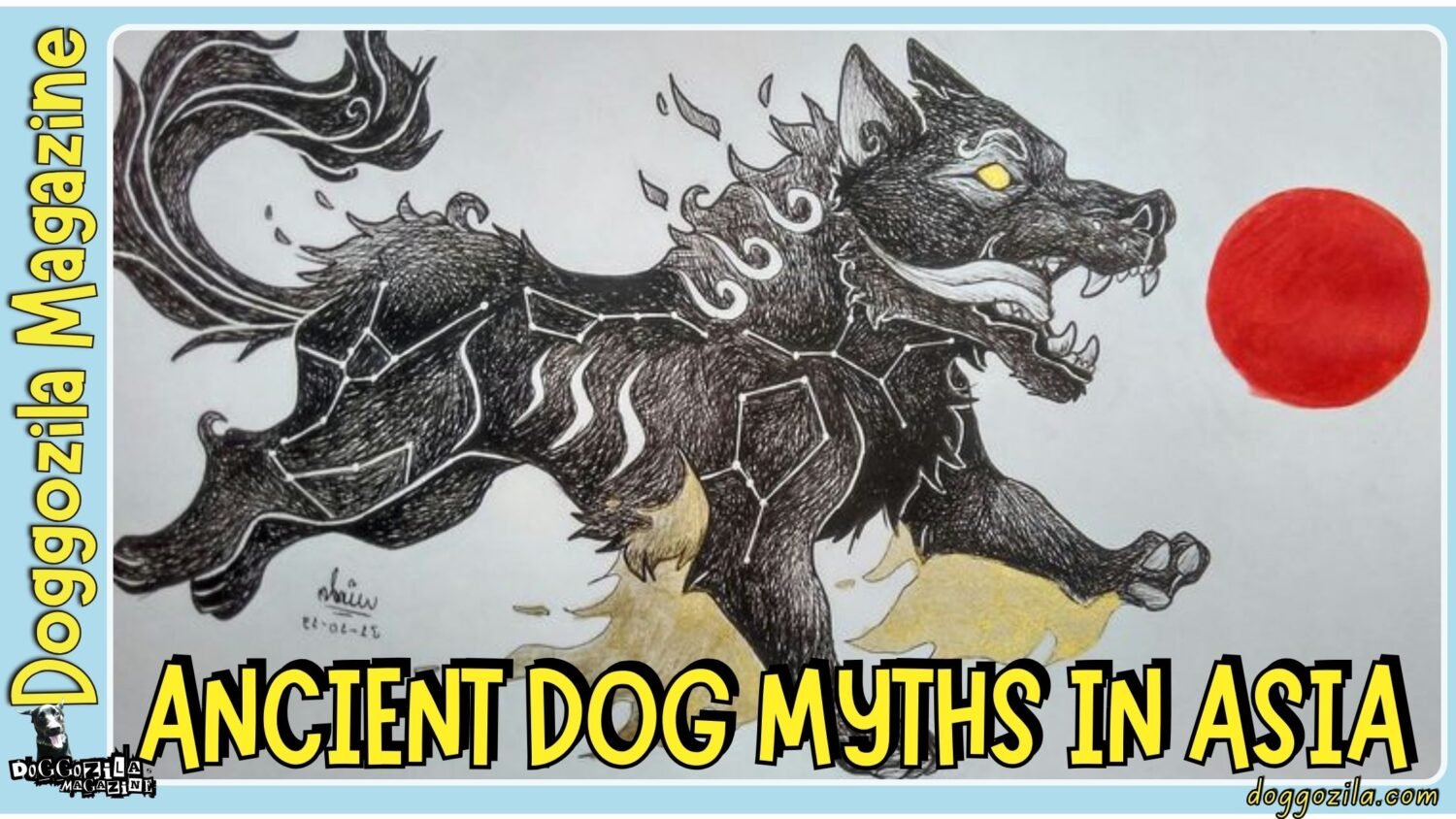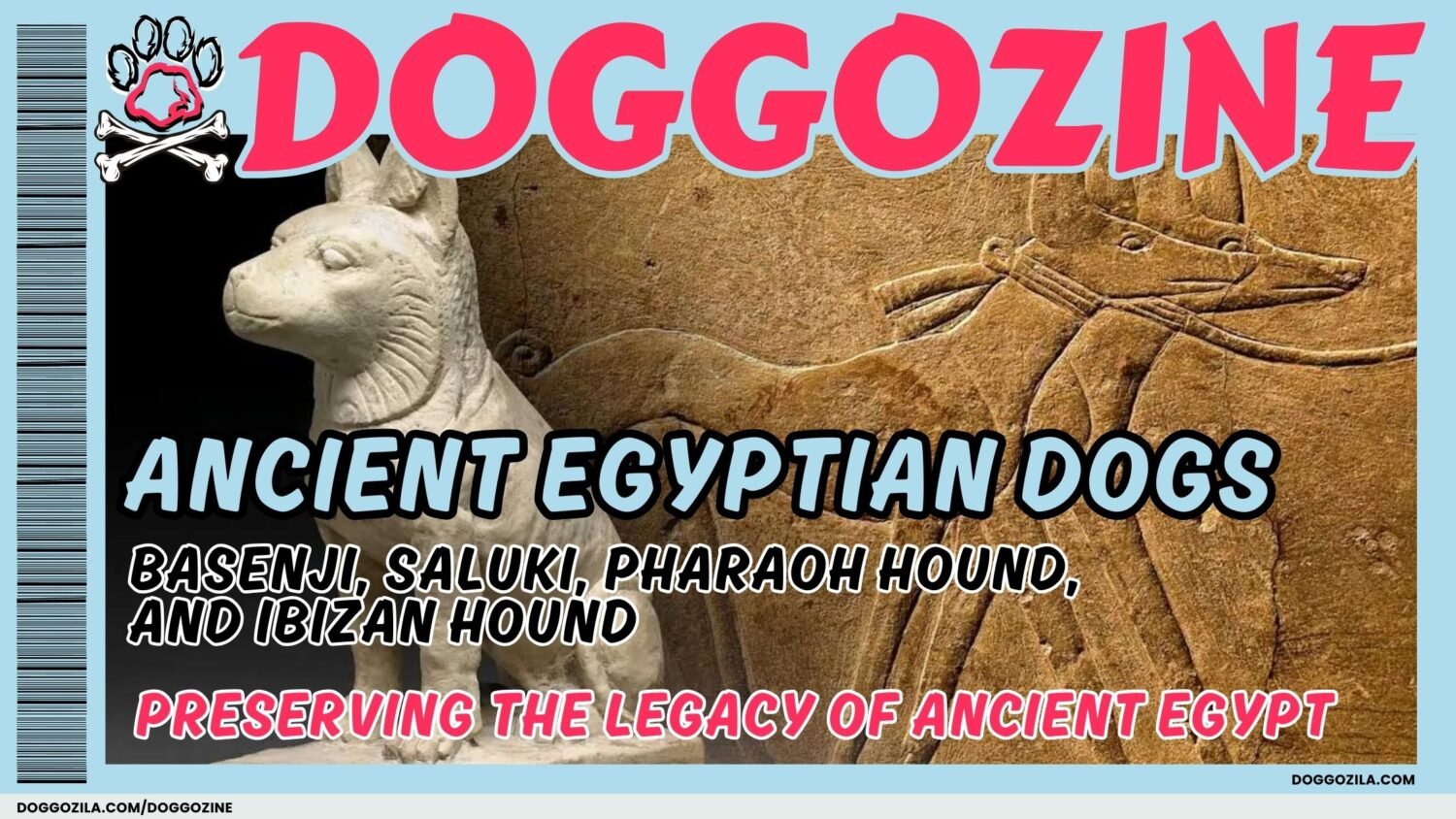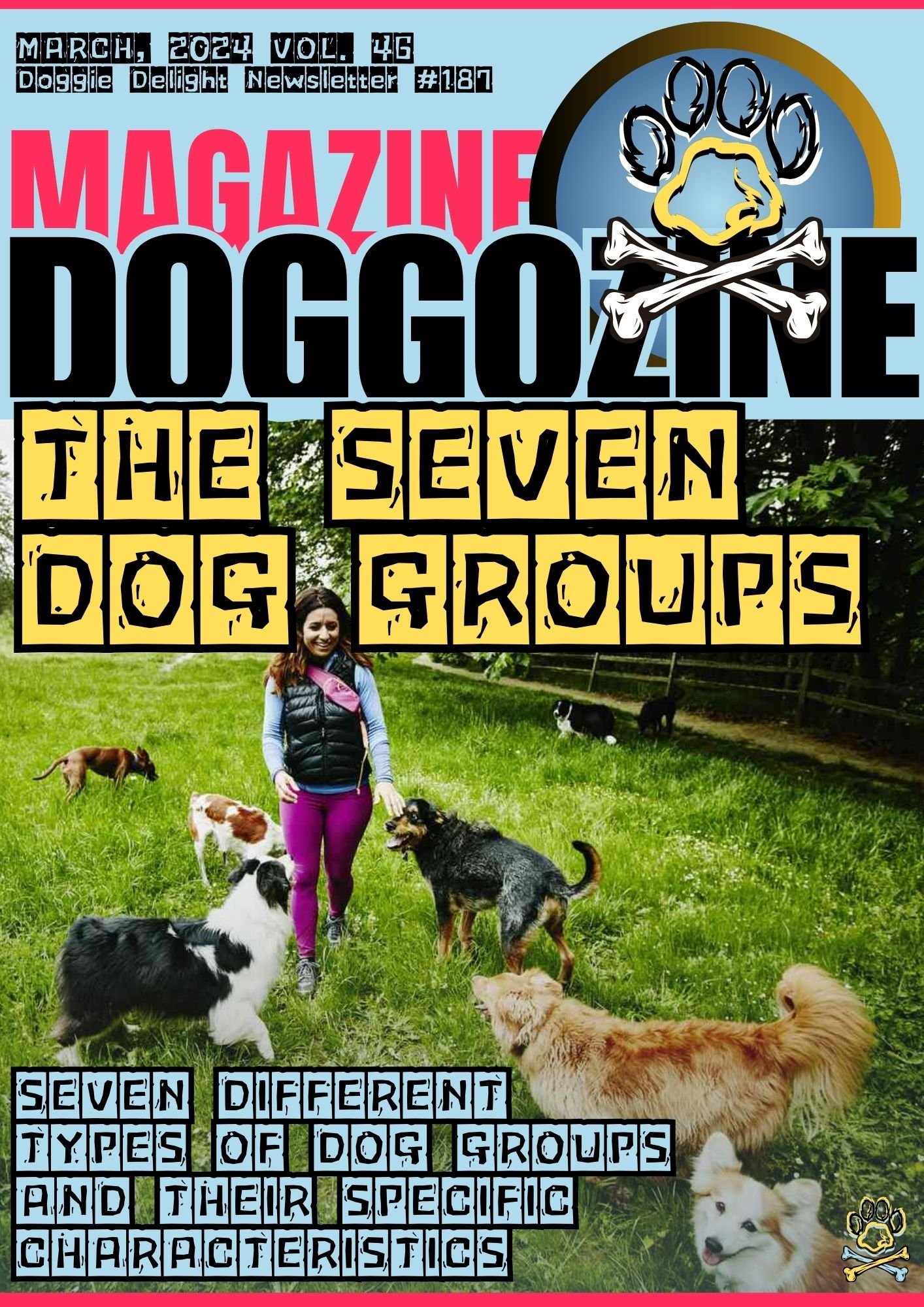
SEVEN DIFFERENT TYPES OF DOG GROUPS AND THEIR SPECIFIC CHARACTERISTICS
When it comes to classifying dogs, there are various systems and standards that have been developed over the years. One popular classification system categorizes dogs into seven major dog groups based on their physical and personality traits.
These groups provide a helpful framework to understand the different types of dogs and their specific characteristics. In this article, we will explore the seven major dog groups and provide an overview of each group.
Sporting Dog Breeds
The first out of the seven dog groups is the sporting dog breeds group. This group consists of breeds that were originally developed for hunting and retrieving game. These dogs are known for their athleticism, energy, and strong instincts. Some examples of sporting breeds include the Labrador Retriever, Golden Retriever, and English Springer Spaniel. Sporting dogs are typically friendly, intelligent, and highly trainable. These dog breeds require regular exercise and mental stimulation to keep them happy and healthy.
Hound Dog Breeds
The second out of the seven dog groups is the hound dog breeds group. Hounds are known for their exceptional sense of smell and their ability to track scents. They were originally bred for hunting and are often used for activities such as search and rescue, tracking, and scent detection. Hound breeds vary in size and appearance, but they all share a keen sense of smell and a strong hunting instinct. Some popular hound breeds include the Beagle, Bloodhound, and Greyhound.
Working Dog Breeds
The third group out of seven is the working dogs. These pups were raised for jobs like pulling sleds, guarding properties, and helping humans with tasks. These hard workers assist humanity a lot. They are known for being strong, smart, and able to do many things. They are often police dogs, search and rescue dogs, and service dogs. Some examples are the Siberian Husky, Boxer, and Doberman Pinscher. Working dogs need lots of physical activity and mental challenges to stay happy and engaged.
Terrier Dog Breeds
The fourth group out of seven is the terriers. Terrier breeds are small to medium dogs. In the past, they were bred for hunting and catching pests. They are known for being feisty, energetic, and full of personality. Terriers are often described as bold, determined, and having lots of character. Popular terriers include the Jack Russell Terrier, Scottish Terrier, and West Highland White Terrier. Terriers require regular exercise and mental stimulation. Otherwise, they may get bored and destructive.
Toy Dog Breeds
The fifth group out of seven is the toy dogs. Toy breeds are very small in size. People often keep them as companions. They are known for their tiny stature, cute looks, and loving nature. Some toy breeds are the Chihuahua, Pomeranian, and Shih Tzu. These dogs are well-suited for apartments. They don’t need as much exercise as bigger breeds. However, they still require mental stimulation and socialization to thrive.
Non-Sporting Dog Breeds
The sixth out of the seven dog groups is the non-sporting dog breeds group. This group consists of breeds that do not fit into any of the other categories. Non-sporting breeds vary greatly in size, appearance, and temperament. Some examples of non-sporting breeds include the Bulldog, Dalmatian, and Poodle. These dogs have diverse personalities and require different levels of exercise and mental stimulation depending on the breed.
Herding Dog Breeds
The seventh group is the herding group. Herding dogs were originally bred for controlling and moving livestock. They are known for their intelligence, agility, and strong herding instincts. Herding breeds are often used in activities such as obedience trials, agility competitions, and herding trials.
Some popular herding breeds include the Border Collie, Australian Shepherd, and German Shepherd. These dogs require regular exercise, mental stimulation, and a job to do in order to be happy and fulfilled. By understanding the different groups and their specific characteristics, dog owners can make informed decisions when choosing a breed that best fits their lifestyle and preferences.
Each group has its own unique traits and requirements, and it is important to consider these factors when selecting a dog. Whether you are looking for an energetic sporting dog or a small and affectionate toy breed, there is a dog out there for everyone.
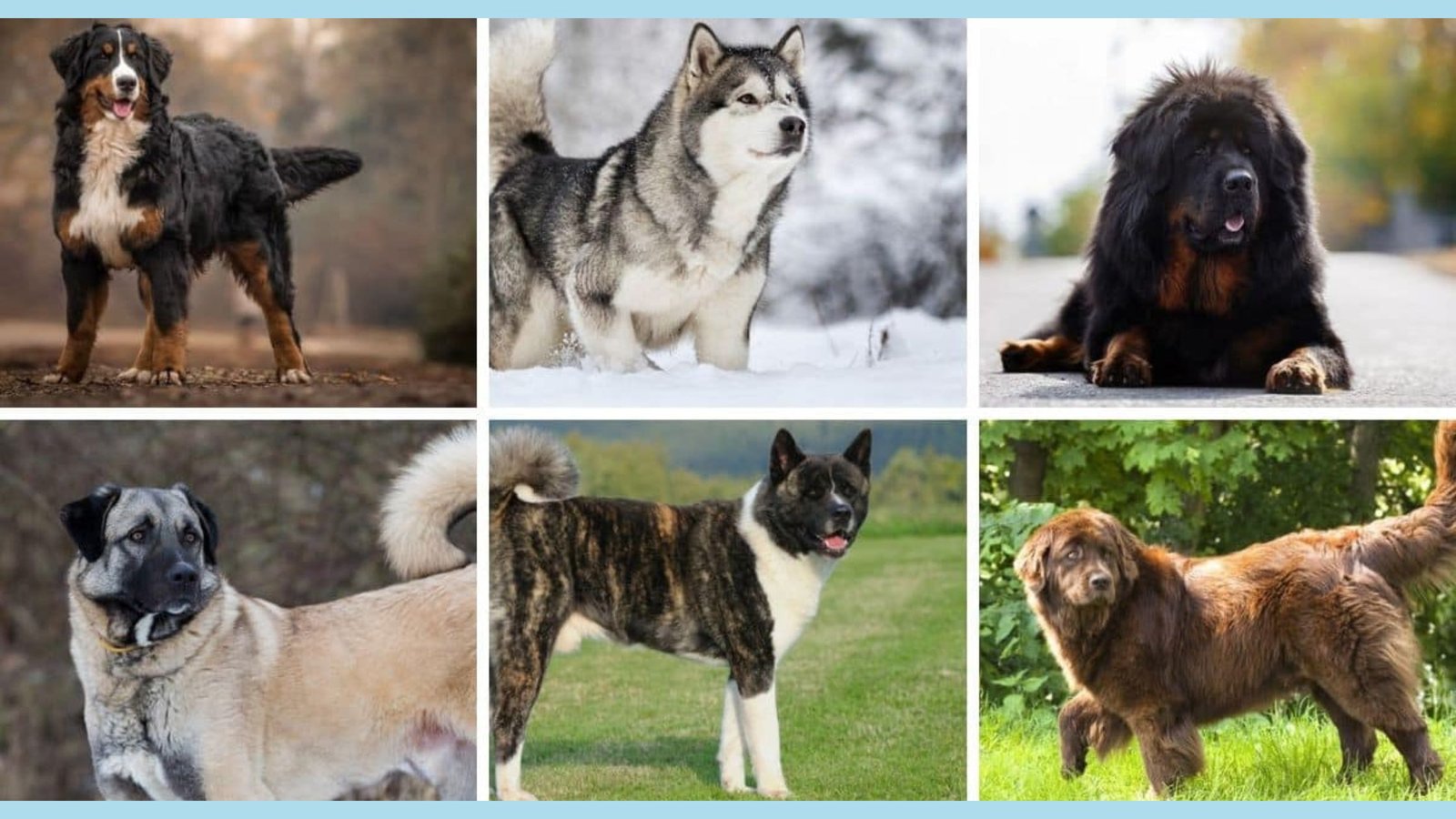
THE WORKING BREEDS DOG GROUPS
The Working Group is the one of the seven dog groups that help humanity a lot and consists of breeds that were originally bred to perform tasks such as pulling sleds, guarding property, or assisting humans in various jobs.
These dogs are known for their strength, endurance, and intelligence. They are often large in size and have a strong sense of loyalty and protective instincts. Some examples of breeds in the Working Group include the Siberian Husky, Boxer, and Great Dane.
The Human Helpers
The Working Group dogs are different breeds that are great at many jobs. They have worked with humans for a long time. Each breed in this group has special traits and abilities that help them do certain tasks. One famous breed is the Siberian Husky. The Chukchi people of Siberia bred them to pull sleds over long distances in cold, harsh places.
Their incredible strength and skill to move through difficult areas made them very helpful to the Chukchi people. Today, Siberian Huskies still race while pulling sleds. People also admire how they look and their friendly behavior. Another Working Group breed is the Boxer.
They were first bred in Germany for bull-baiting and later as guard dogs. Boxers have strong, muscular bodies, powerful jaws, and lots of energy. They are smart and can be trained well, making them great working dogs. They help in search and rescue, police work, and as service dogs for people with disabilities.
Dogs with Incredible Versatility and Capabilities
The Great Dane is called the “Apollo of Dogs.” This breed is also part of the Working Group. Great Danes were originally bred in Germany to hunt big animals like boars. Despite their huge size, they are known for being gentle and loving. Great Danes often work as therapy dogs because they are calm and can provide comfort. The Working Group has many other amazing breeds too, like the Bernese Mountain Dog, Newfoundland, and Rottweiler.
Dogs in the Working Group are special. Each breed has its own cool skills. The group shows that dogs can do many different jobs. Some dogs pull sleds, some guard buildings, and others help people at work. These dogs are strong, tough, smart, loyal, and protect their owners. They make great partners for humans.
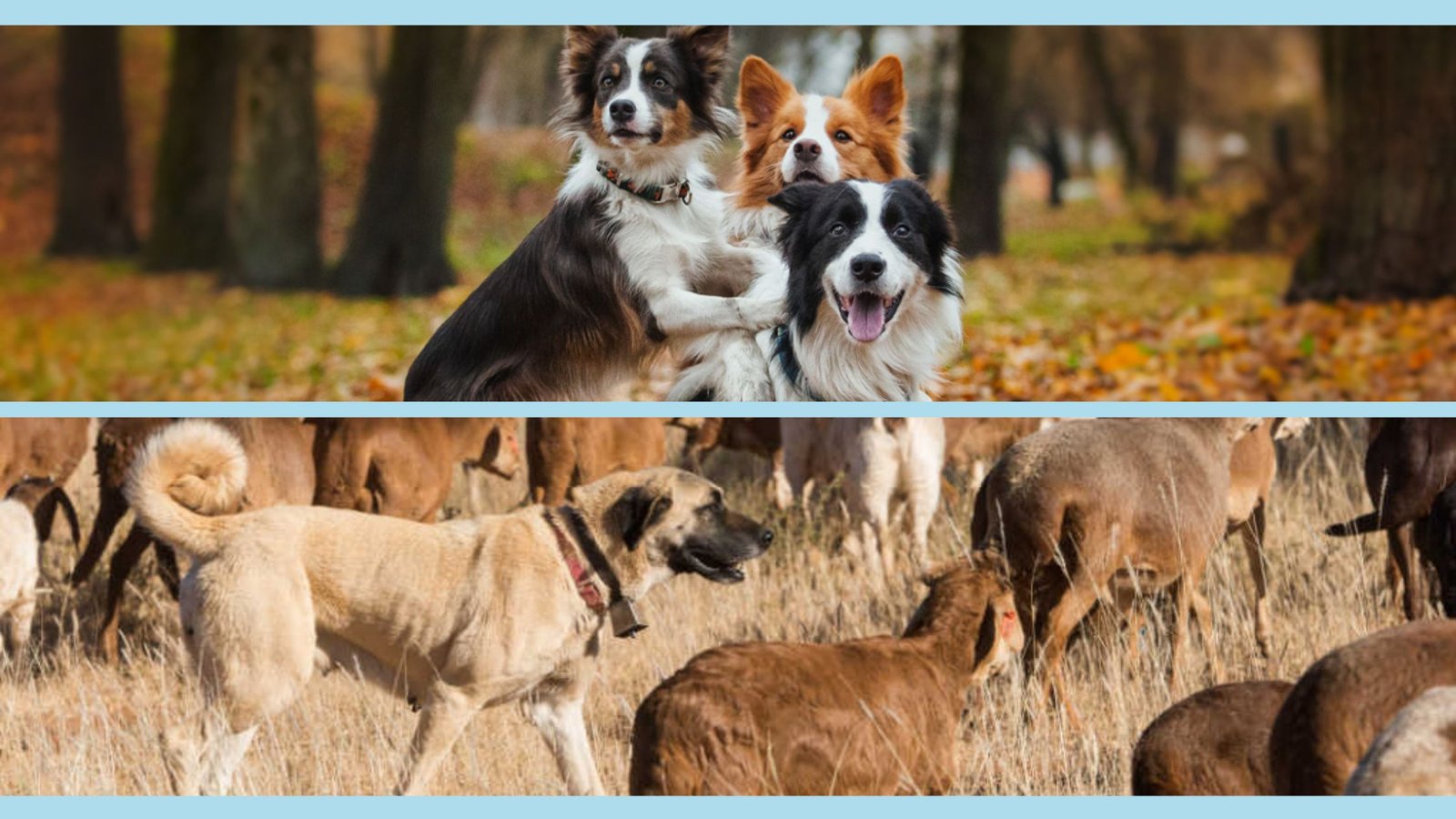
THE HERDING BREEDS DOG GROUPS
The Herding Group has dogs that help herd and control farm animals. These dogs have a natural ability to gather, drive, and protect livestock. They are smart, quick, and good at following orders. Popular breeds like Border Collies, Australian Shepherds, and German Shepherds are in this group.
The Livestock Guardians
For a long time, these breeds have worked with people to manage livestock. Their ancestors were bred for herding abilities. This made highly skilled working dogs. These smart, trainable breeds are great for herding, guarding, and search and rescue jobs. The Border Collie is one of the most well-known herding dogs.
They are amazing at herding and are considered the smartest breed. Border Collies can predict how livestock will move and adapt their herding style to the situation. Border Collies have a whole lot of energy. They need lots of exercise and activities to stay happy. Another breed like this is the Australian Shepherd. It may have “Australian” in its name, but it’s from the United States.
Australian Shepherds helped herd animals on ranches. These dogs are good at many things, like agility and obedience competitions. Australian Shepherds love to stay active. If they get bored, they might act out. The German Shepherd is another herding breed. At first, they were bred to help with herding sheep. But now, people know them for being great workers.
Invaluable Partners for Farmers and Ranchers
German Shepherds work as police dogs, in the military, searching for people, and as service dogs. They are easy to train, loyal, and protective. This makes them great workers and family pets. There are many other breeds in the Herding Group too. Some examples are the Collie, Shetland Sheepdog, and Belgian Malinois. They may look different, but all herding dogs share one thing. They help humans manage and control livestock.
To sum up, the Herding Group has breeds made for herding livestock. Their talents, intelligence, and ability to learn make them invaluable partners. Border Collies are amazing herders. Australian Shepherds can do many things well. German Shepherds excel at working jobs. Each breed brings something special. If you want an intelligent, hardworking dog, a herding breed could be perfect.
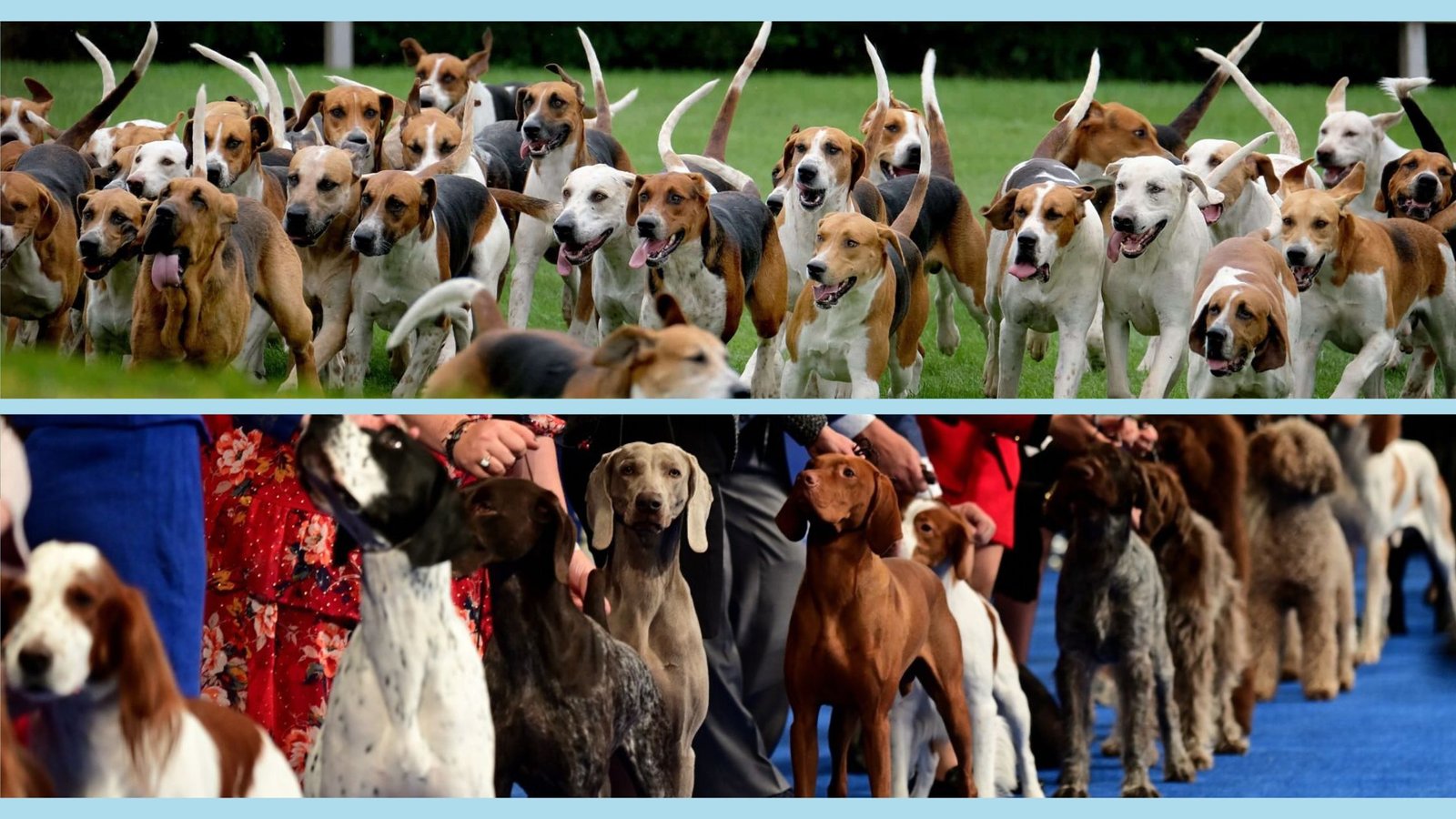
THE HOUND BREEDS DOG GROUPS
The Hound Group has dogs bred for hunting. They have a great sense of smell and can track well. They’re speedy too. There are two types: sighthounds that use eyesight to chase prey, and scent hounds that follow smells to find game. Popular breeds are Greyhounds, Beagles, and Bloodhounds.
Sleek And Aerodynamic Physique
Sighthounds, also called gazehounds, have slim, streamlined bodies made for speed. They can spot prey from far away and run incredibly fast after it. The Greyhound is a well-known sighthound with an aerodynamic build. It can reach speeds up to 45 mph, making it among the fastest dogs ever.
Other sighthounds include Afghan Hounds, Salukis, and Whippets. Scent hounds have an excellent sense of smell to track prey by following scent trails. They tend to be sturdier and more muscular than sighthounds. Beagles are popular scent hounds with great tracking abilities, often used in search and rescue. Their droopy ears and soulful eyes are distinctive.
Bloodhounds have an extremely sensitive nose, frequently used for tracking and trailing. Although associated with hunting, many hound breeds now serve other roles too. Basset Hounds, with their short legs and long ears, are beloved family companions. Dachshunds were originally badger hunters but are now popular household pets despite their elongated bodies and stubby legs.
Gentle And Friendly Nature
In addition to their hunting skills, hounds are admired for being gentle and friendly. While bred for different hunting styles, both sighthounds and scent hounds make great companions due to their amiable natures. Whether lean chasers or muscular trackers, hounds offer families an energetic yet affectionate pet.
Many hound dogs have social and open natures. They make great friends for homes and people. But, each type of hound has its own ways and moods. So new owners should study up and think about how their life fits with a hound before getting one. Overall, the hound family has all kinds of cool breeds. Whether they’re chasing animals at lightning speed or following a scent with laser focus, hounds are amazing and have a long, awesome history.
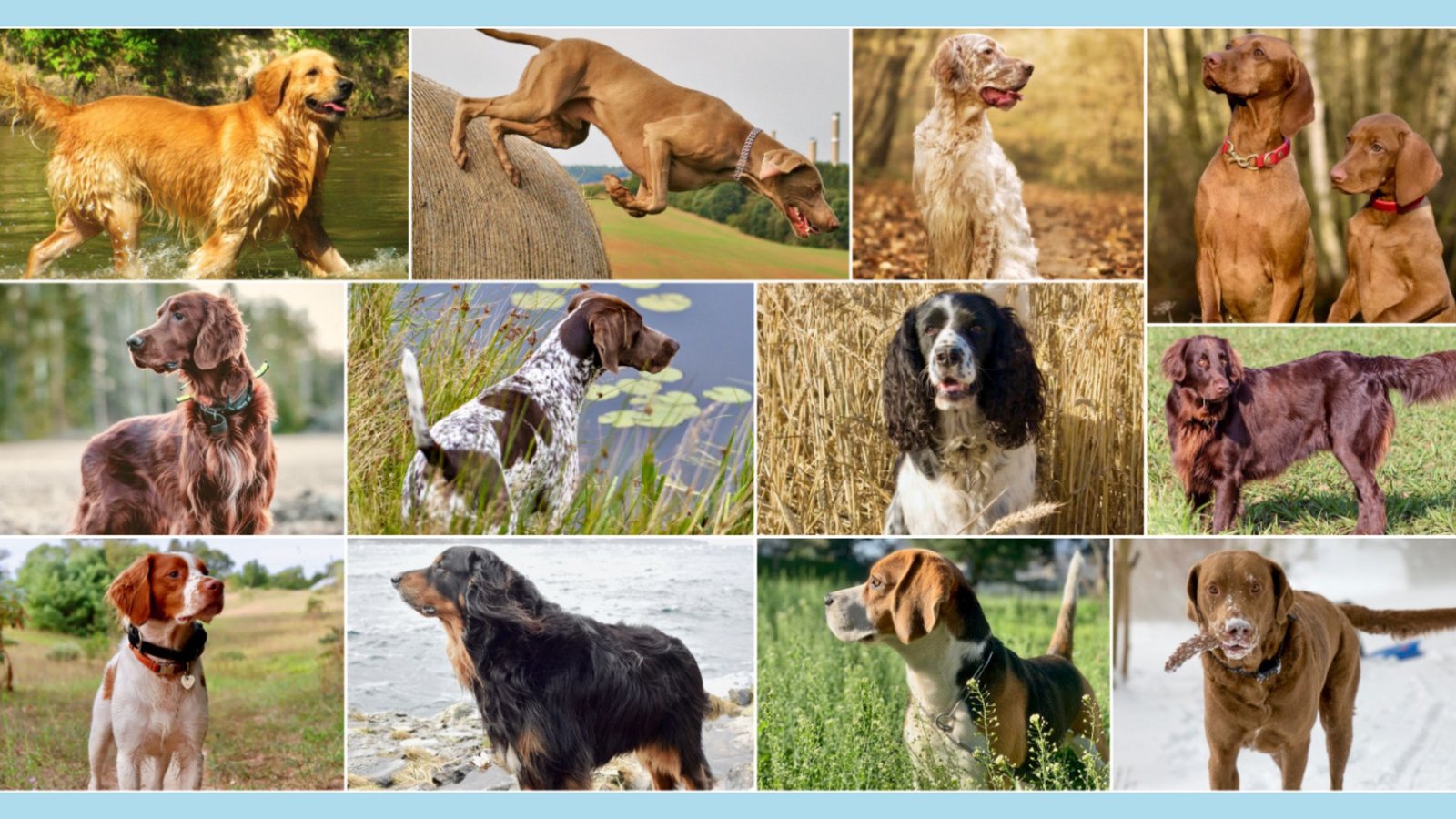
THE SPORTING BREEDS DOG GROUPS
The Sporting Group has lots of different breeds. They were made to hunt and fetch. These dogs are super good at tracking and getting game. But they’re also really athletic, energetic, and can go for a long time. Their natural talents and strong bodies make them perfect for all sorts of activities and competitions. We at Doggozila.com want you to know this group is our favorite out of all seven dog groups. But that’s only because all of us writers own a Labrador or Golden Retriever. So maybe we don’t know the other breeds as well.
The Mighty Retrievers
One of the most popular Sporting breeds is the Labrador Retriever. Labs are known for being friendly and outgoing. This makes them awesome family pets. They’re super smart and easy to train. That’s why they’re often chosen for search and rescue, service, and therapy jobs.
Their incredible swimming skills and strong fetching instincts also make them top picks for duck hunting and dock diving contests. The Golden Retriever is a popular breed in the Sporting Group. These dogs have beautiful golden fur coats.
They are extremely loyal and friendly. Golden Retrievers can do many different activities well. They excel at things like obedience trials, agility competitions, and being therapy dogs. Their gentle nature and ability to learn make them a great choice for families and individuals.
Natural Hunting Instincts and Versatile
The English Setter is another breed in the Sporting Group. These dogs look elegant and graceful. They are known for their striking appearance and skill at hunting. English Setters have an excellent sense of smell. They are very good at tracking and finding game animals.
English Setters compete in field trials. Their endurance and ability to cover large areas are tested. English Setters are also easy to train. They make great companions for active people or families who enjoy outdoor activities.
In summary, the Sporting Group includes breeds that are athletic, intelligent, and driven to work. Whether competing in field trials, obedience trials, or just living an active lifestyle with their owners, these dogs love a challenge. Their natural hunting instincts and physical abilities make them versatile. They are well-suited for many activities and competitions.
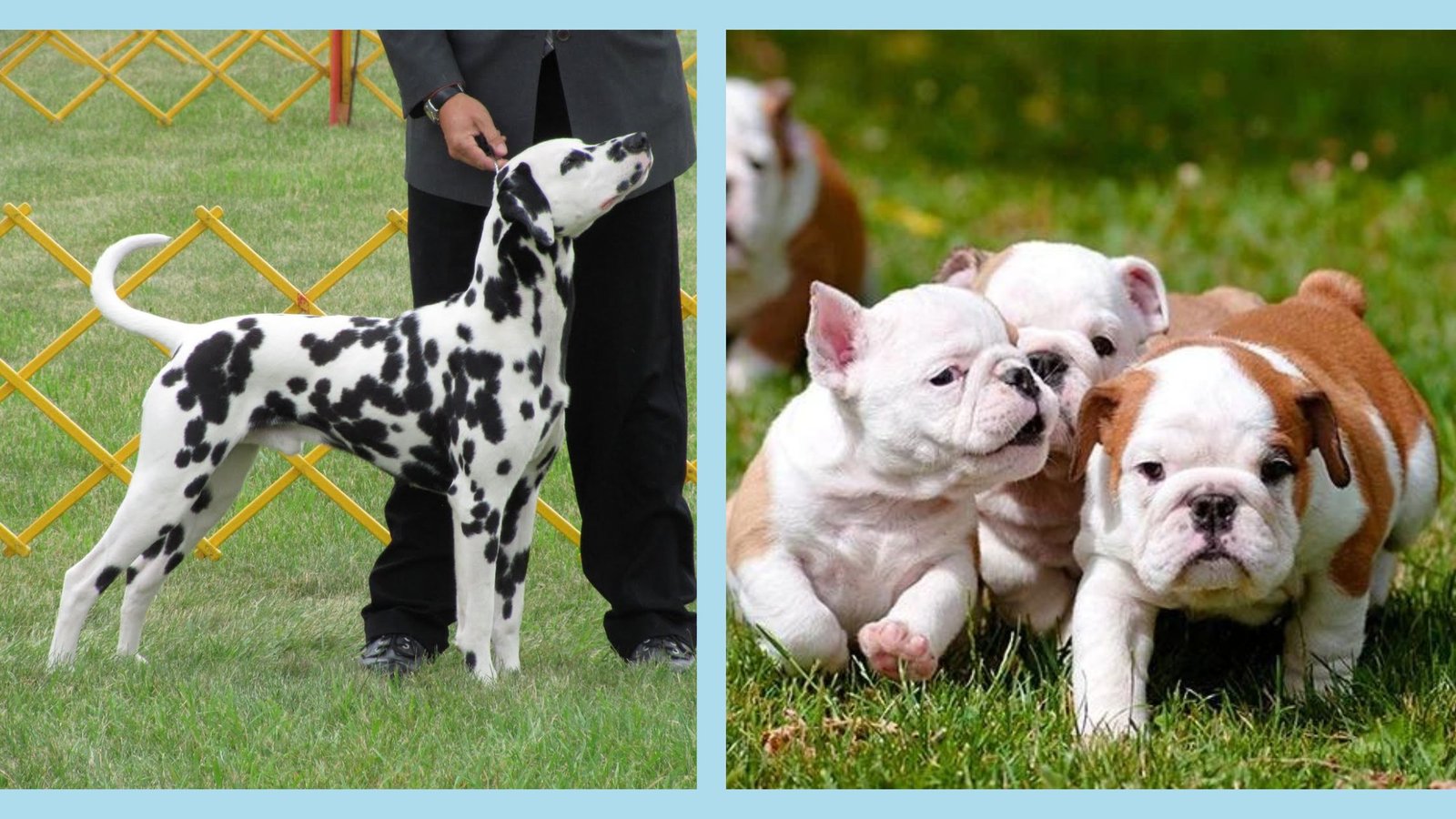
NON-SPORTING BREEDS DOG GROUPS
The Bulldog is a very popular dog breed. It has a wrinkly face and a strong body. But Bulldogs are gentle and loving dogs. Even though they look tough, they are kind pets. Bulldogs are loyal and patient. They are great dogs for families.
Poodles
Poodles are another breed in the Non-Sporting Group. They are very smart and can do many things. Poodles come in three sizes: standard, miniature, and toy. Their curly fur doesn’t cause allergies, but needs regular grooming. Poodles make good pets and are great at dog sports like obedience and agility. They can even retrieve things from water. Their intelligence makes them good dogs for training.
Dalmatians
The Dalmatian is another Non-Sporting Group breed that many people love. They have a unique spotted coat pattern. Dalmatians are energetic and active dogs. They were bred to run alongside horse-drawn carriages and guard the passengers and goods. Today, Dalmatians are still known for their endurance. They make great jogging or hiking buddies.
Dalmatians are also very trainable and excel in activities like obedience and agility. These three breeds show the diversity in the Non-Sporting Group. The strong and resilient Bulldog, the intelligent and versatile Poodle, and the energetic and active Dalmatian all have different traits. This group has a wide range of breeds to suit different lifestyles and preferences.
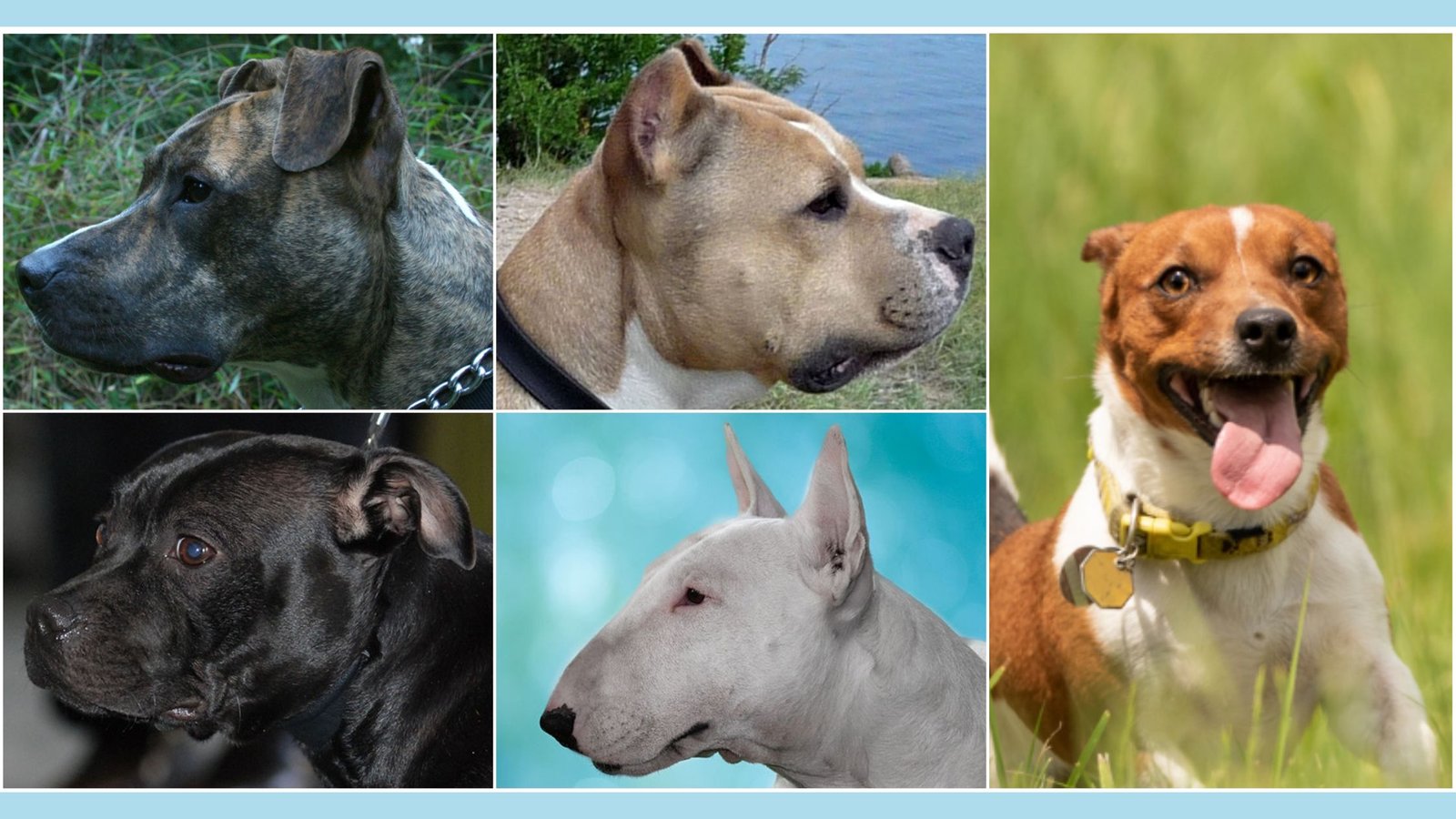
THE TERRIER BREEDS DOG GROUPS
Terriers are dogs bred to hunt and kill pests. They are full of energy and courage. They love chasing small prey. Terriers are small to medium-sized dogs with strong, muscular bodies. Their rough coats protect them from the weather. They look tough and ready for action. After retrievers, we love terriers the most out of all dog groups.
Jack Russell Terrier
The most popular terrier is the Jack Russell. They came from England, where people used them to hunt foxes and other small animals. Jack Russells are super smart. They need lots of activities to stay busy and happy. Jack Russells have tons of energy and can jump really high. They love sports like agility and flyball.
Scottish Terrier
Another well-known terrier is the Scottish Terrier, or “Scottie.” Scotties have a distinct look with their rough coats and beards. Scottish Terriers can be stubborn and independent. Training them takes patience and consistency. But with proper socialization and training, Scotties become loyal, loving pets. Every dog owner would love having a Scottie as a companion!
West Highland White Terrier
The West Highland White Terrier is often called the “Westie.” These dogs come from Scotland. They were bred to hunt foxes and other small animals in the rough highlands. Westies make great family pets. They are known for being friendly and outgoing. They have a double coat. This coat has a soft undercoat and a rough outer coat that protects them from the weather.
Terriers may be small, but they have big personalities and lots of energy. They are not right for everyone. Their strong hunting instincts and stubborn nature need experienced and dedicated owners. However, for those who are up for the challenge, terriers can be very rewarding companions. Their lively antics provide endless entertainment.
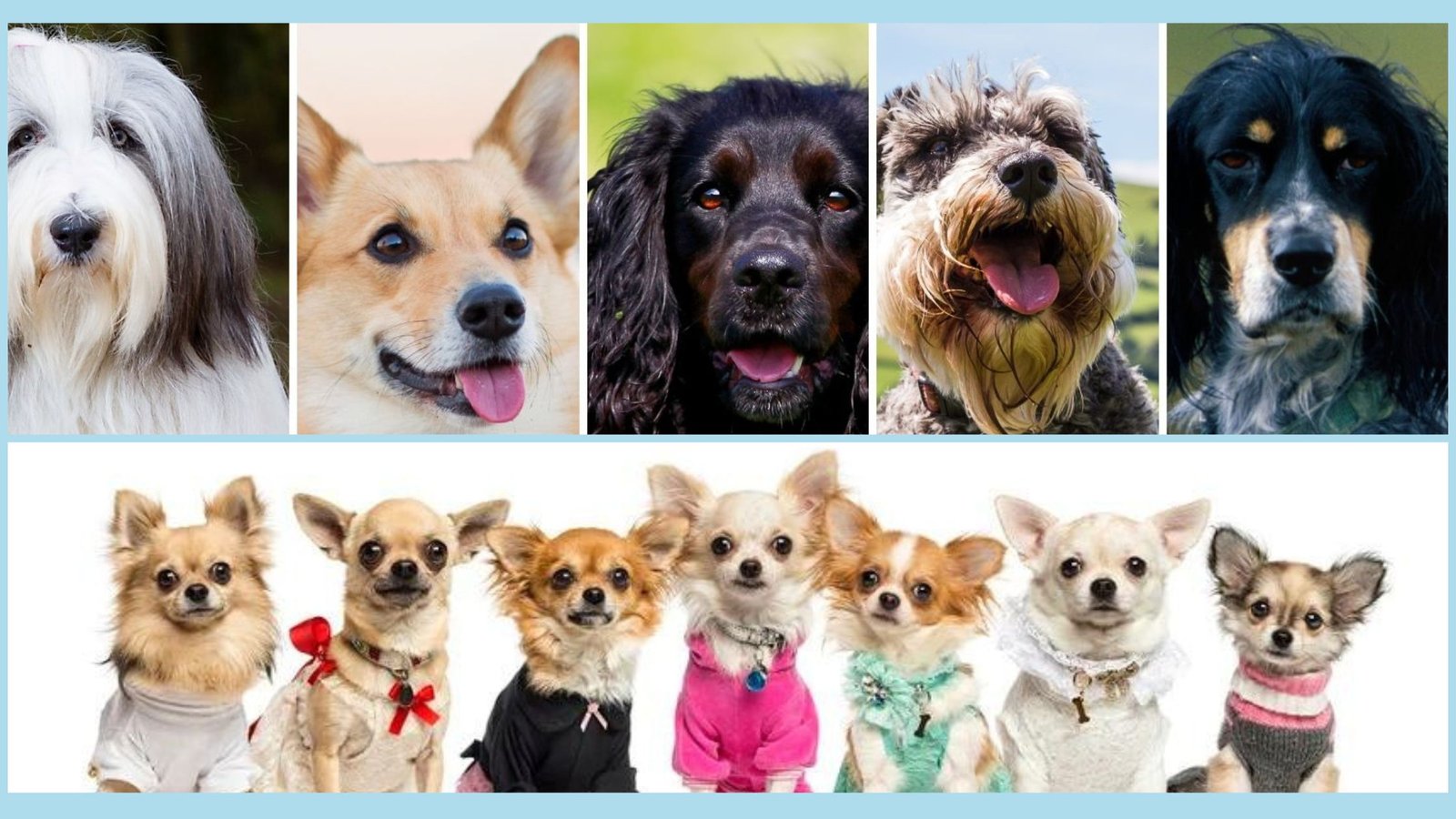
THE TOY BREEDS DOG GROUPS
Besides the Chihuahua, Pomeranian, and Shih Tzu, the Toy Group includes other lovable breeds. One is the Maltese. This tiny dog has a beautiful white coat. Aristocrats have loved Maltese dogs for a long time. They are gentle and affectionate. Maltese dogs make great companions for individuals and families.
The Pint-Sized Yorkie, Cavalier King Charles Spaniel and Papillon
Another beloved Toy Group breed is the Yorkshire Terrier or “Yorkie.” These tiny dogs have huge personalities despite their small size. Yorkies have long, silky hair and a confident attitude. They often strut proudly. Yorkies are intelligent and lively. They are always ready for an adventure or cuddling on the couch.
The Cavalier King Charles Spaniel is a delightful dog breed in the Toy Group. With their big, friendly eyes and elegant looks, these pups have a charming appeal. Cavaliers are known for being great therapy dogs and beloved family pets because they are so friendly and loving. They are happy to curl up on your lap or explore the great outdoors.
The Papillon is another small dog in the Toy Group. They have distinctive butterfly-like ears that give them their name. Papillons are smart and easy to train. They excel at dog sports like agility and obedience. Even though they are tiny, they are energetic and love to do activities with their humans. The Toy Group has really small dogs but that’s not why they are last in the seven dog groups. They are last because they have huge personalities.
The Mighty Pekingese
The Toy Group also includes the Pekingese, a breed with a grand history and regal demeanor. These dogs were once considered sacred in China and were kept only by the imperial family. Pekingese have a distinctive flat face, fluffy coat, and a confident, independent personality. They are loyal and devoted to their families, often forming a strong bond with one special human.
Overall, the Toy Group offers many small dog breeds that bring joy and companionship to countless homes. Whether you want a lapdog to snuggle or a lively pal for adventures, this group has a breed for every person’s preferences and lifestyle.
Those were the seven dog groups and hopefully one breed interested you. If so, we suggest adopting any dog that comes into your life and learning which group, out of the seven dog groups they belong to.
If you want to continue reading on this topic, we recommend to visit the Pets Control HQ
